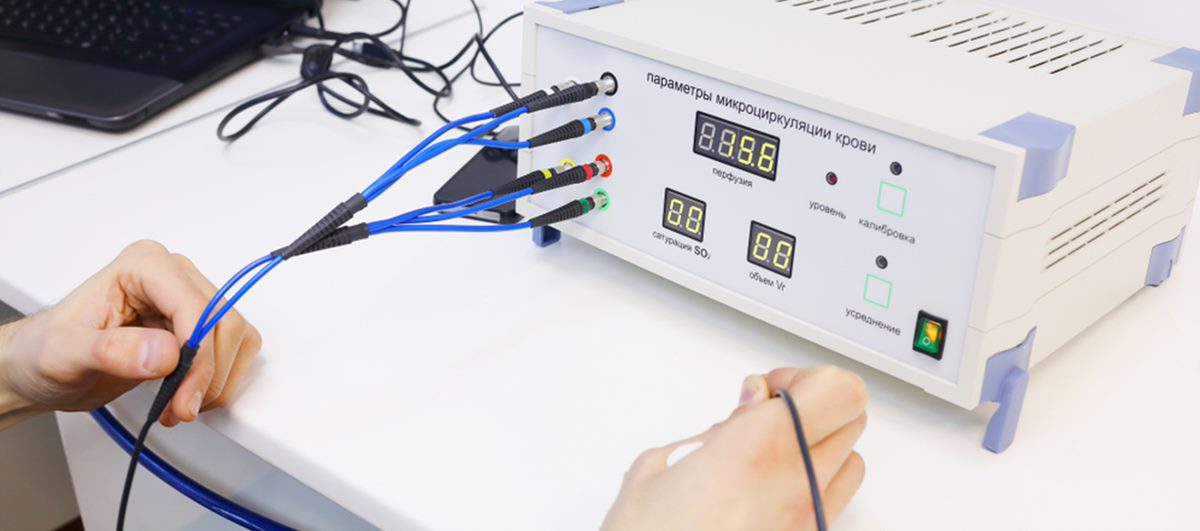
Medical Equipment - If you are working with any equipment you need to be sure of its accurate working. How do you know that is working fine? Calibration comes into the picture at such times, it ensures that the equipment is working as it should be, gives correct reading and provides a safe working environment too. Lab equipment calibration also ensures that companies are upholding their legal obligations. Medical Equipment If you are working with any equipment you need to be sure of its accurate working. How do you know that is working fine? Calibration comes into the picture at such times, it ensures that the equipment is working as it should be, gives correct readings,s and provides a safe working environment too. Lab equipment calibration also ensures that companies are upholding their legal obligations.
Calibration is the process of comparing a measurement equipment or instrument (device under test, DUT) to a known standard of equal or superior accuracy. The standard in a measurement is thought to be the more accurate of the two, hence the equipment under test would be calibrated to see how much it deviates from the standard.
Typical calibration, which is normally done by commercial calibration laboratories, follows a manufacturer's calibration protocol and is done with a reference standard that is multiple times more accurate than the DUT, typically four times.
Calibration of laboratory equipment is important due to numerous considerable reasons:
Safety – Dangerous materials processing is done in many labs where inaccurate data can put the workers in danger. In such places calibration provides accuracy and in turn, keeps everyone safe.
Cost-Effective – In a manufacturing unit or a lab, inaccuracies hinder/stop production and the longer it takes to detect the costlier the mistakes become. Regular maintenance and calibration is always cost-effective in the long run.
Longer Instruments Life – Daily wear & tear of instruments is there when in use. Routine calibration and maintaining standards elongate the life of Medical Equipment /instruments.
Certification – Up-to-date calibrations help you getting certification for various processes.
All measurement instruments lose precision over time. This is caused by normal wear and tear. Other factors that can cause variations in accuracy are electric or mechanical shock and hazardous manufacturing environment. Depending on the type of instrument and the environment in which it is used, it can change quickly or take a long time to decay. To reduce the bias in an instrument's data, you'll need instrumentation calibration. When gathering data, precision and accuracy are both essential. The degree to which repeated measurements with the same conditions get the same result is referred to as precision. The degree of closeness of a quantity's measurement to its actual value is called accuracy. Calibration of laboratory equipment enhances its accuracy. Accuracy of the measuring devices improves the product quality as well as reduces cost.
The value of calibration will only increase in the future. The more advanced technology becomes, the more exact measurements are required, therefore the importance of calibration increases.
Calibration of a measuring equipment is required based on the manufacturer's recommendations, following any type of mechanical or electronic shock and periodically as well. The hidden costs and dangers associated with an uncalibrated measuring device could be significantly more than the cost of calibration if done on a regular basis (annually, quarterly, monthly). As a result, it is advised that the measuring devices be calibrated on a regular basis by a recognized company to guarantee that measurement errors are within acceptable limits.
Consider the cost of calibrating as an investment, and the cost of not making the investment as the cost of getting an inaccurate reading.
The "owner" of the instrument determines the calibration intervals based on manufacturer guidelines. Commercial calibration laboratories can recommend intervals, but they are usually unfamiliar with the specifics of the instrument's use.
The norm in most businesses is to calibrate once a year. As you gather data from calibration tests, you'll be able to change the frequency of calibrations and, if necessary, upgrade to more robust measurement instruments.
The OEM intervals are usually calculated using information such as mean drift rates for the instrument's various components. However, as an instrument "owner," numerous additional considerations should be considered when determining calibration intervals, including the needed accuracy vs. the instrument's accuracy, the impact an OOT will have on the process, and the performance history of the specific instrument in your application.
Analytical equipment that are used often must be calibrated on a regular basis. The frequency of calibration will be determined by the amount of use. The intervals should be determined using internal standard operating procedure guidelines, which are based on equipment supplier recommendations.
In conclusion, calibration is critical whenever measurements are critical because it allows users and businesses to have trust in the findings they monitor, record, and then control.
Any licensed laboratory must keep track of the calibration of its equipment. Most calibration facilities provide customers with a printed calibration certificate to keep as confirmation of quality standards. For any lab equipment calibration services in UAE, you can contact Oxymed. We provide timely and cost-effective Medical Equipment services in Dubai and Delhi, NCR.